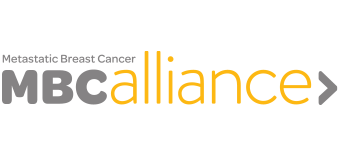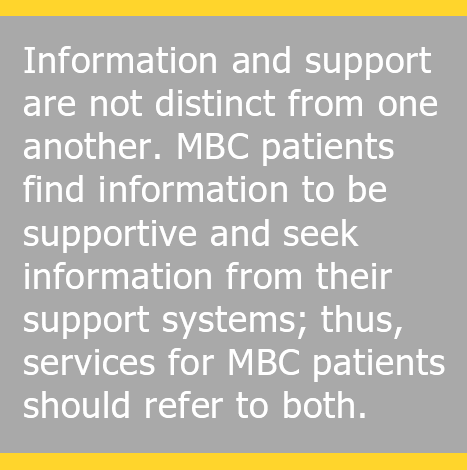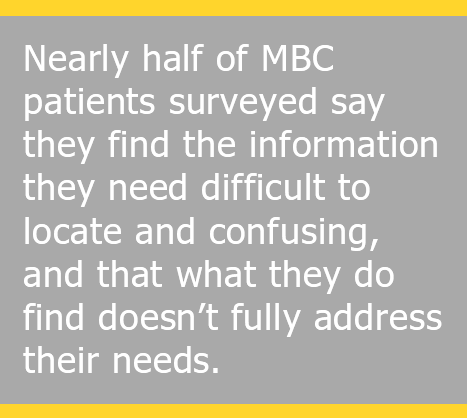Information and Support Services
Alliance members, and others, need to improve consistency of information about metastatic breast cancer across agencies; better quantify the numbers of people living with metastatic breast cancer they are serving; understand what services are most often accessed; and expand reach into all communities regardless of socioeconomic status, gender, race, culture or geography.
- Quantitative data on the demographics and numbers of metastatic breast cancer patients accessing programs and services are not consistently collected. As a result, it is not known how patients use the tools, how the programs and services can be optimized, and which patients are not being reached.
- The majority of organizations report that their programs and services are underutilized, surmising that patients don’t know about them, do not consider the programs to be suited to their needs, or are seeking information and support in other places.
- Many Alliance members provide high-quality information and support services to metastatic breast cancer patients and their families. However, the information provided requires that patients have relatively high health literacy and be Internet savvy. Organizations must consider how to reach other subgroups of the metastatic breast cancer patient population. Because Alliance members offer so much general information, it is difficult for individual patients to find what they need.
- Persistent gaps in metastatic breast cancer information on members’ sites and in print include detailed information on the latest treatments; monitoring of treatment, including for side effects and quality of life; palliation; and advanced directives and end-of-life care. Information on how metastatic breast cancer is diagnosed could be improved, and there is a dearth of information on new drugs in clinical research.
- Alliance member websites do not address metastatic breast cancer facts sufficiently to inform the patient populations or even caregivers and early stage breast cancer patients. More content and community can be created by enhancing current information, using a modern design, and adding tools for social networking.




